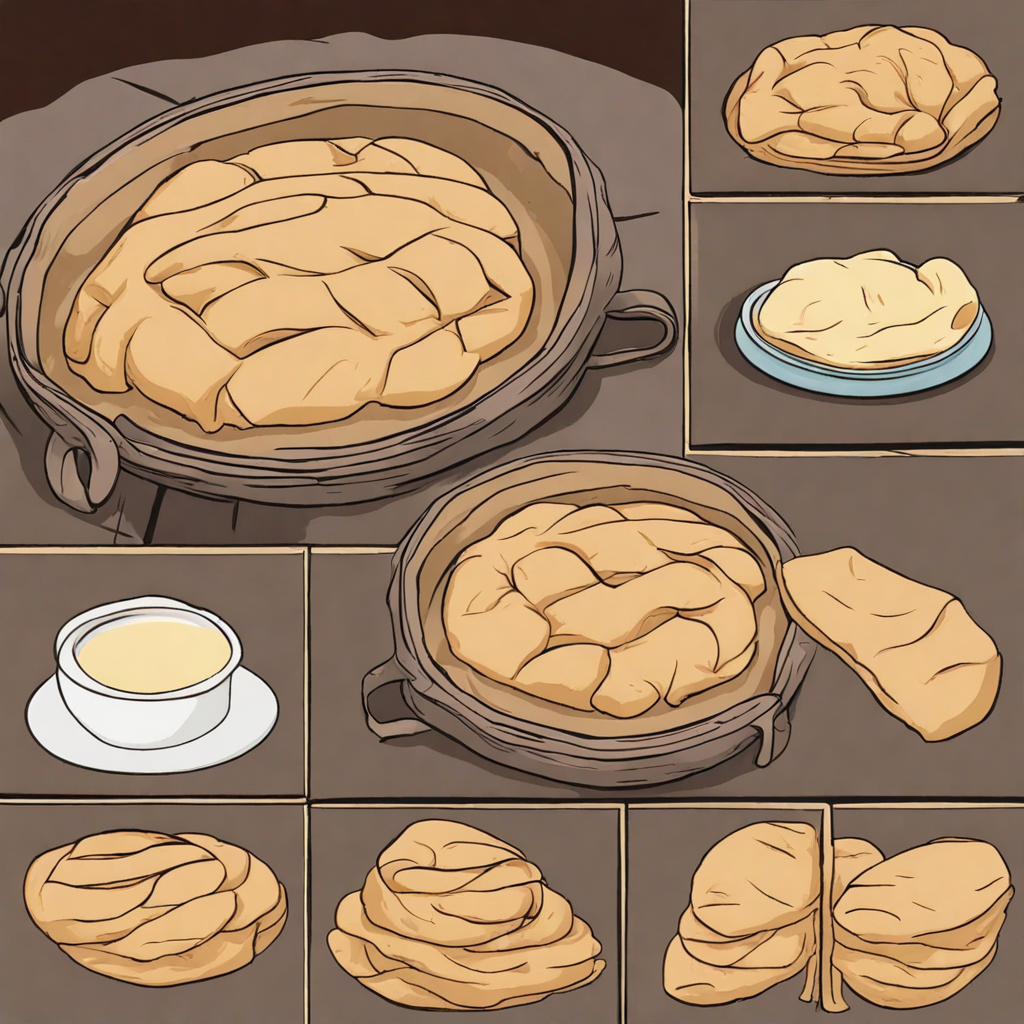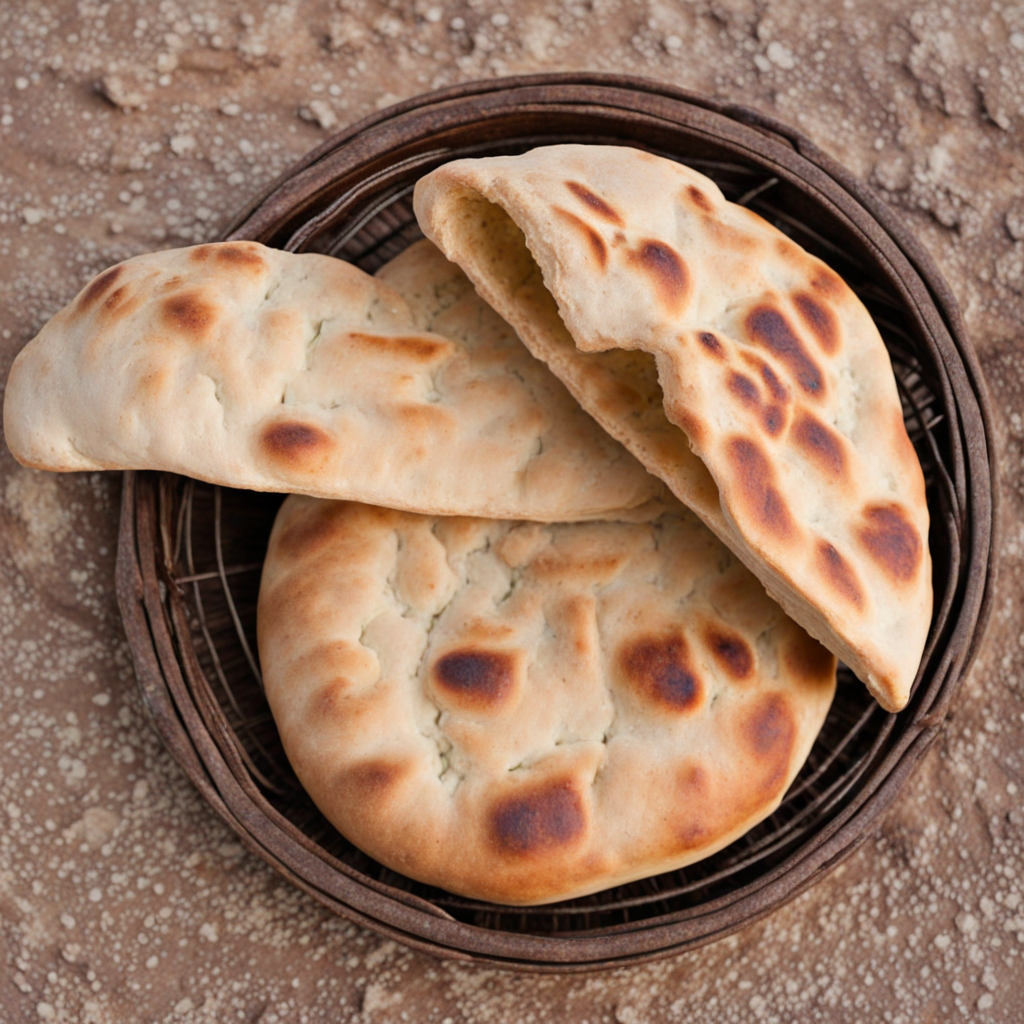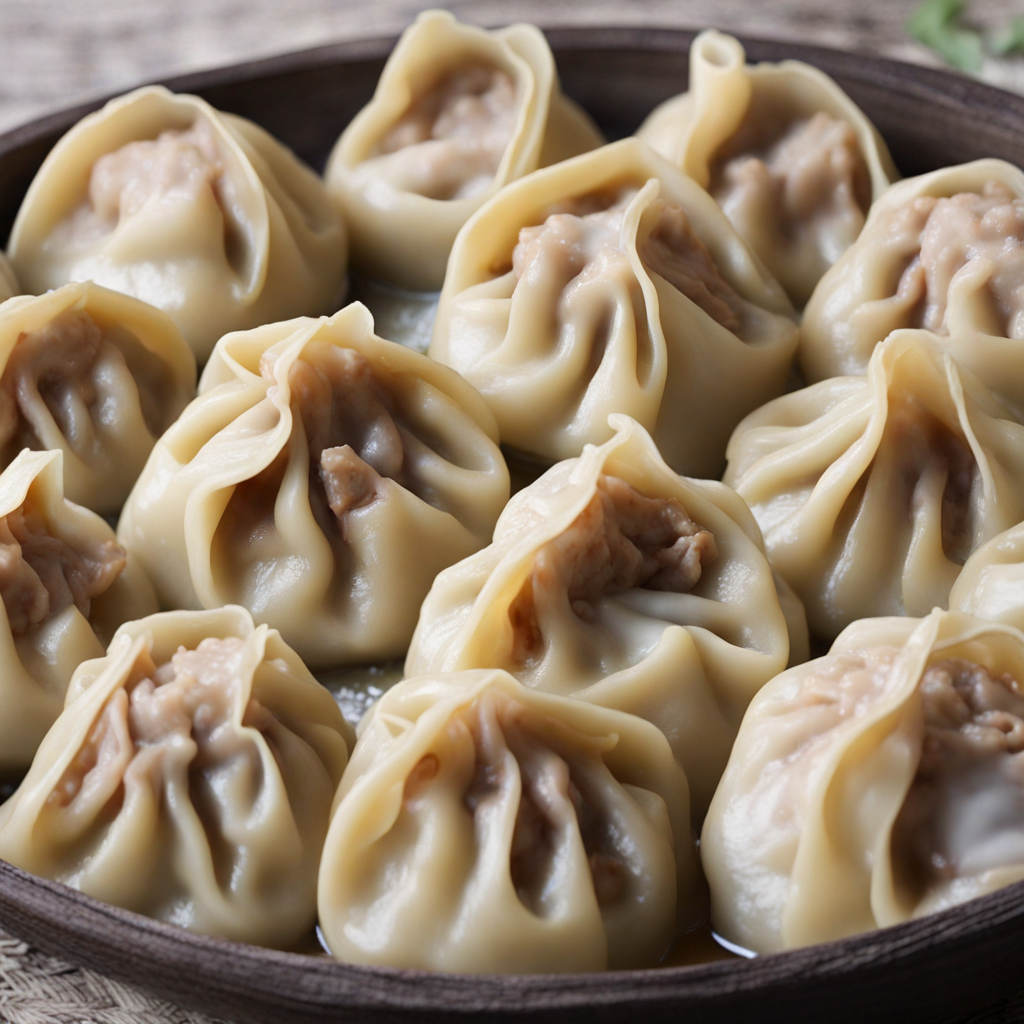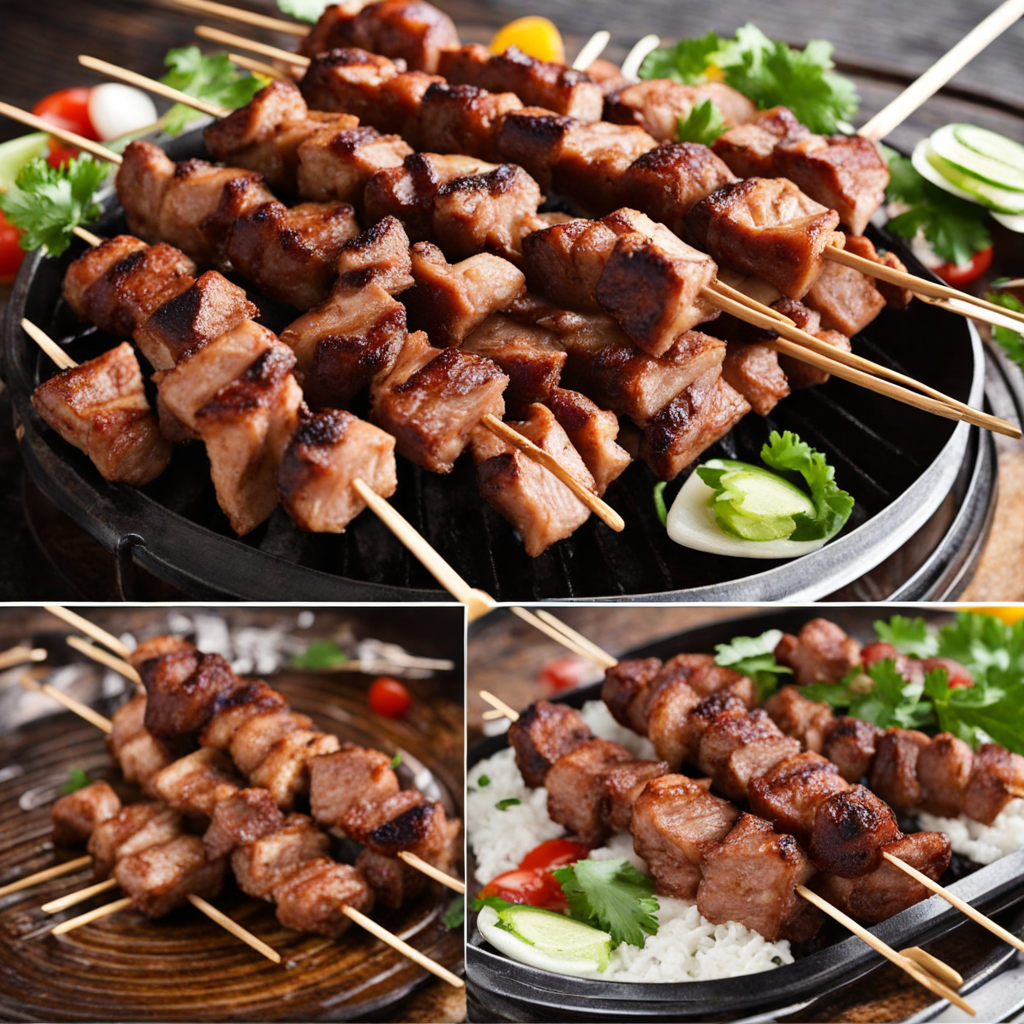Tandyr Nan
Tandyr Nan, a traditional bread from Kazakhstan, is a delightful culinary experience that embodies the essence of Central Asian flavors. Baked in a tandoor, or clay oven, this bread boasts a unique texture and a slightly smoky aroma that sets it apart from other flatbreads. The dough, typically made from wheat flour, water, salt, and yeast, is kneaded to perfection and allowed to rise, resulting in a soft and airy interior. The high temperatures of the tandoor create a beautifully crisp crust, with delightful char marks that add visual appeal and depth to its flavor. As you break apart the warm Tandyr Nan, you'll be greeted by its pillowy softness, inviting you to take your first bite. The bread has a subtle nutty flavor that complements a variety of dishes, making it a versatile staple in Kazakh cuisine. It pairs exceptionally well with hearty stews, grilled meats, and creamy dairy products like sour cream or cottage cheese. It's not uncommon to find Tandyr Nan served alongside a fragrant bowl of laghman, a popular noodle dish, or alongside a traditional meat-filled dumpling called manty, enhancing your dining experience with each mouthful. Tandyr Nan is more than just a side dish; it represents the warmth of Kazakh hospitality and the communal spirit of sharing food. In many homes, it is customary to break bread together, symbolizing unity and togetherness. Whether enjoyed on its own, dipped in rich sauces, or used to scoop up savory morsels, Tandyr Nan invites you to embrace the rich culinary heritage of Kazakhstan. Each bite transports you to a world of ancient traditions and flavors, making it a must-try for anyone seeking to explore new gastronomic landscapes.
How It Became This Dish
Origin of Тандыр нан Тандыр нан, often referred to simply as "nan," is a traditional bread that holds a significant place in the culinary heritage of Kazakhstan. The origins of this flatbread can be traced back to ancient nomadic cultures of Central Asia, where the practice of baking bread in a clay oven known as a "tandyr" (or "tandoor") became widespread. The tandyr is a cylindrical oven made from clay, and it has been used for centuries to cook a variety of foods, particularly bread. The techniques and recipes for making нан have been passed down through generations, evolving alongside the lifestyles of the Kazakh people. The nomadic lifestyle of the Kazakhs shaped the characteristics of тандыр нан. Traditionally, the Kazakhs moved with their herds across vast steppes, requiring food that was portable, long-lasting, and easy to prepare. The dough for тандыр нан consists of simple ingredients such as flour, water, salt, and yeast, which were readily available to herders. The bread could be made quickly and baked in the tandyr, allowing nomads to have a staple food that complemented their meat-heavy diet. The baking process in the hot clay oven gives the bread a distinctive texture and flavor that is both chewy and slightly smoky. \n Cultural Significance Тандыр нан is more than just a food item in Kazakhstan; it is deeply embedded in the cultural identity of the Kazakh people. The bread is often associated with hospitality and generosity, symbolizing the warmth of Kazakh culture. It is customary for hosts to serve нан to guests, reflecting the importance of sharing and community in Kazakh society. In many households, the preparation of тандыр нан is a communal activity, with family members gathering to mix the dough, shape the bread, and bake it together, fostering bonds and traditions. During significant cultural and religious events, тандыр нан plays an essential role. It is served during celebrations such as weddings, holidays like Nauryz (the Persian New Year), and various family gatherings. The bread is often accompanied by traditional dishes, such as мант (steamed dumplings) or казы (horse meat sausage), enhancing the overall dining experience. In this way, тандыр нан transcends its role as a mere food item; it becomes a centerpiece of social gatherings, strengthening ties within families and communities. \n Development Over Time As Kazakhstan transitioned from a nomadic to a more settled lifestyle, the production and consumption of тандыр нан also evolved. With the establishment of urban centers and the introduction of modern baking techniques, the methods for making тандыр нан have diversified. While traditional methods remain popular, many Kazakh families now incorporate modern conveniences such as electric ovens and ready-made dough. However, the essence of the bread—its connection to heritage and tradition—remains intact. The popularity of тандыр нан has not only endured within Kazakhstan but has also spread to neighboring countries and regions. Variations of нан can be found in other Central Asian nations, including Kyrgyzstan and Uzbekistan, where similar baking techniques and cultural practices exist. This cross-cultural exchange has led to an appreciation of тандыр нан beyond Kazakhstan's borders, creating opportunities for culinary exploration and fusion. In recent years, there has been a resurgence of interest in traditional foods, leading to a revival of classic baking techniques. Many Kazakh artisans and bakers are returning to the tandyr to produce authentic тандыр нан, emphasizing the importance of preserving culinary heritage. This movement is complemented by the growing trend of slow food and local sourcing, which encourages people to appreciate traditional methods and ingredients. \n Modern-Day тандыр нан Today, тандыр нан is widely available across Kazakhstan and is a staple in both rural and urban settings. Bakeries and markets often feature freshly baked нан, inviting locals and tourists alike to savor its unique taste. Street vendors may also sell this beloved bread, making it accessible to a broader audience. The bread is typically served warm, with its crusty exterior and soft interior making it an ideal companion for a variety of dishes, from soups to grilled meats. In addition to its traditional uses, тандыр нан has found its way into contemporary culinary applications. Chefs are experimenting with the bread, incorporating it into modern recipes and fusion cuisine. For example, it may be used as a base for innovative sandwiches, wraps, or even as a side dish to gourmet meals. This adaptation showcases the versatility of тандыр нан, appealing to younger generations and food enthusiasts eager to explore the flavors of Kazakhstan. Furthermore, the global rise of interest in authentic ethnic cuisines has led to an increased appreciation for traditional dishes like тандыр нан. Food enthusiasts, chefs, and cultural ambassadors are now sharing the story of Kazakhstan's culinary heritage, promoting the unique flavors and techniques associated with this iconic bread. Events such as food festivals and cultural exhibitions often feature тандыр нан, allowing people from different backgrounds to engage with Kazakh food culture. \n Conclusion The journey of тандыр нан from its ancient nomadic origins to its modern-day significance is a testament to the resilience and adaptability of Kazakh culinary traditions. It is a symbol of hospitality, community, and cultural identity, deeply rooted in the history of the Kazakh people. As it continues to evolve and gain recognition on the global stage, тандыр нан remains a delicious reminder of Kazakhstan's rich heritage and the enduring power of food to connect people across cultures.
You may like
Discover local flavors from Kazakhstan







